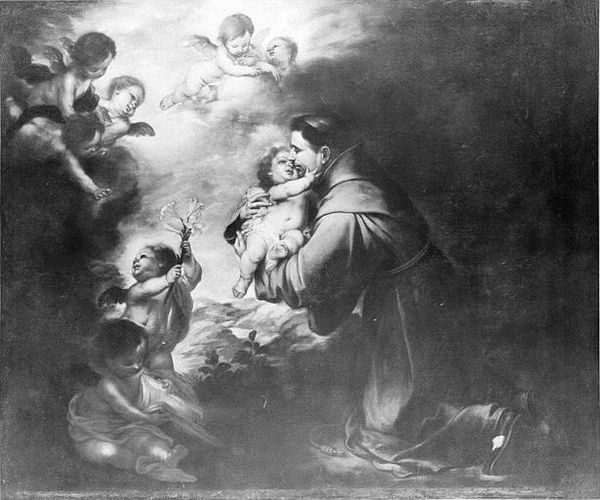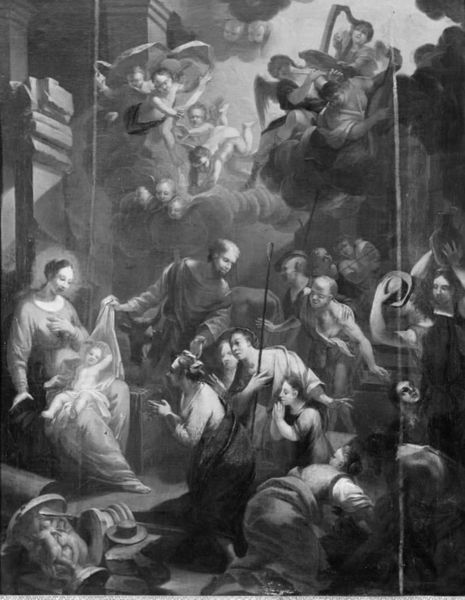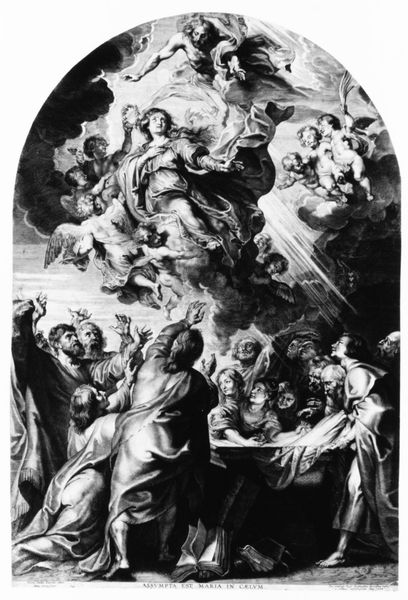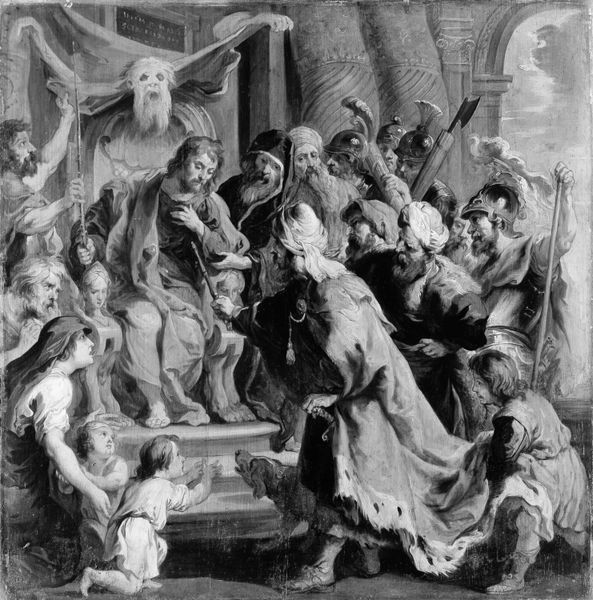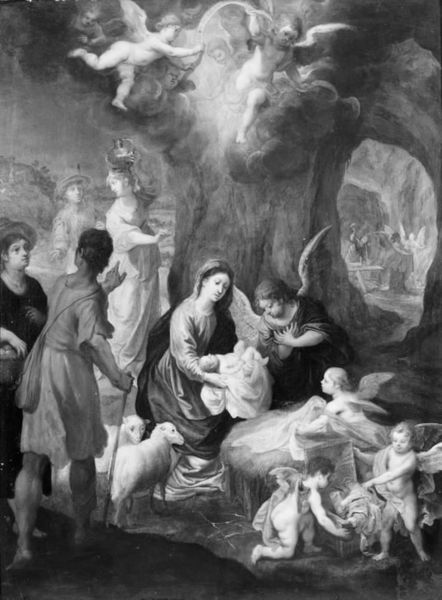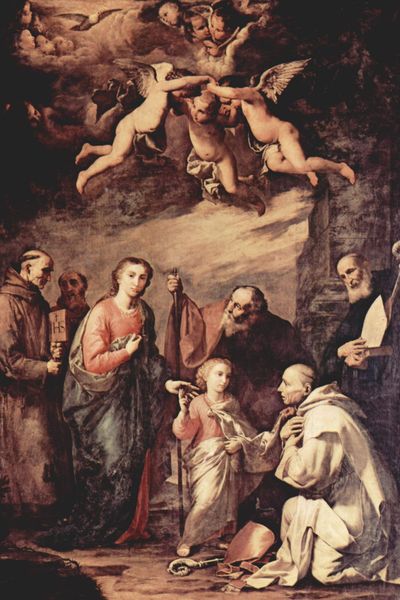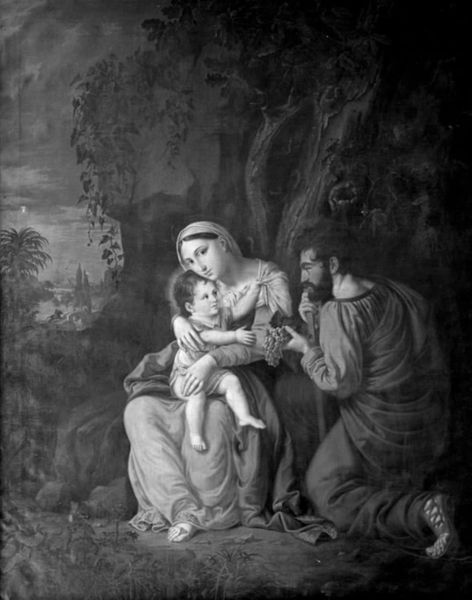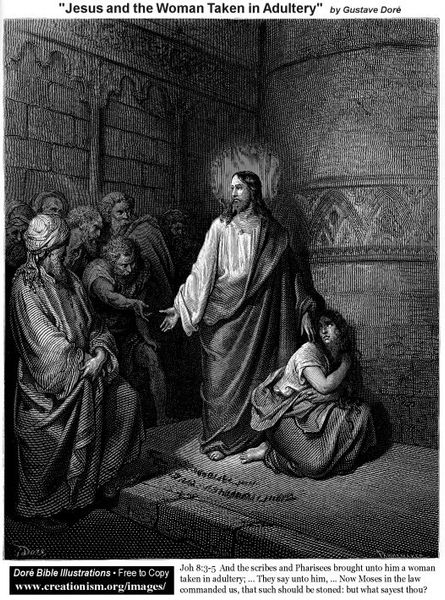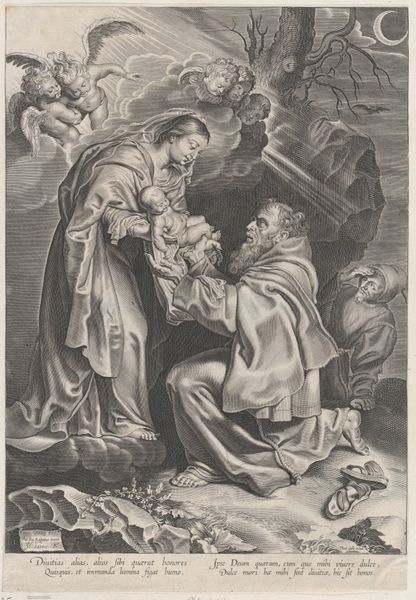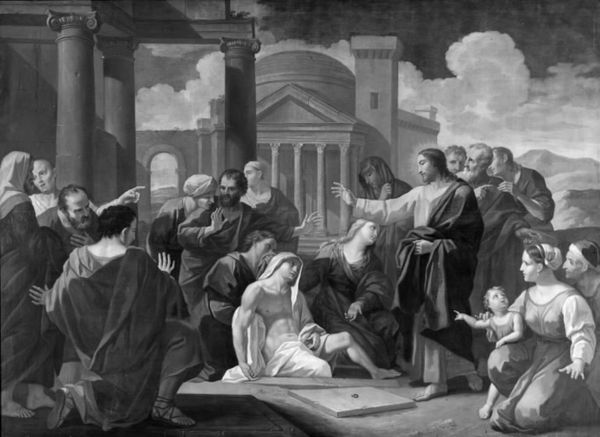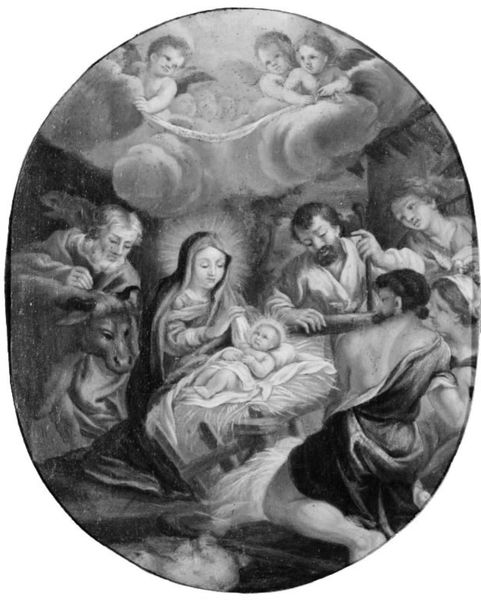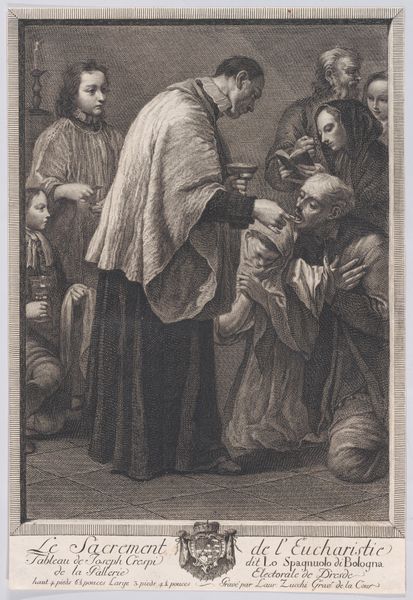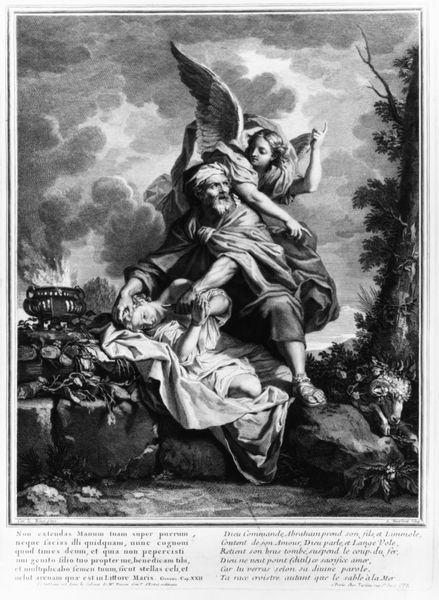
painting, sculpture
#
narrative-art
#
baroque
#
painting
#
sculpture
#
figuration
#
sculpture
#
black and white
#
monochrome photography
#
history-painting
#
academic-art
#
monochrome
#
monochrome
Dimensions: 46 1/2 × 35 1/2 in. (118 × 90 cm)
Copyright: Public Domain
Curator: Right now, we’re looking at "The Presentation in the Temple," an oil painting by Stefano Pozzi, housed right here at the Art Institute of Chicago. Editor: It's powerful, even in monochrome. This rendering creates such a sense of theatricality. Almost like a still from a sacred play. Curator: Absolutely, and it pulls from a wellspring of tradition! Consider the era, its thematic anchors – we’re dealing with a key scene in Christian narrative art where issues of gender, power and representation take center stage. Mary presents Jesus at the temple to fulfill the Mosaic Law. Editor: Yes! And the monochrome aesthetic almost heightens the drama, pulling you into the core story of sacrifice. I find it hauntingly beautiful—the way light filters through these figures is mesmerizing. Are those angels or are they more like, well, celestial observers, a divine Greek chorus? Curator: Perhaps both! The work shows an interesting intersection between baroque aesthetics and academic precision in its figurative representation. This is reflected in the carefully choreographed poses. Think about how the elders, particularly Simeon who cradles the child, represent societal acceptance, male privilege. The work is brimming with codified gestures, from Mary's submissive stance, embodying the humble piety expected of women, to the gestures of the High Priest who validates the holy infant’s destiny. Editor: Wow, you are absolutely right! Seeing these layered readings really changes my perspective from spontaneous appreciation to something so profound... What about Mary? How does her agency figure within this composition of deference? Curator: The gaze itself signifies volumes! Here we see Mary almost in the role of object of transaction—her submission, albeit celebrated, further cements the patriarchal structures shaping religious and social orders. Editor: You know, despite the limitations and clear, biased framing from the time this was painted, that understanding gives the piece so much strength. It's kind of a looking glass into our collective history, even as the black and white aesthetic feels strikingly contemporary. Curator: Agreed. It challenges us to actively assess inherited traditions and power structures with nuance. It becomes more than a story depicted on canvas. Editor: So true. Okay, now I’m completely hooked and slightly disturbed, which is maybe the best outcome a great painting can offer.
Comments
No comments
Be the first to comment and join the conversation on the ultimate creative platform.
